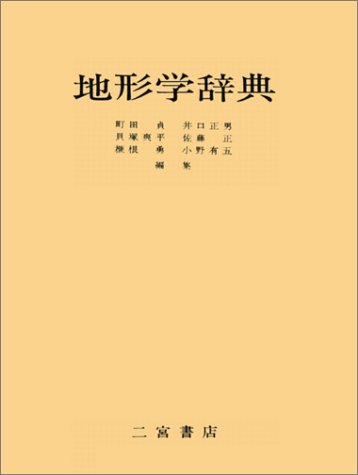5 0 0 0 地形学辞典
- 著者
- 町田貞 [ほか]編集
- 出版者
- 二宮書店
- 巻号頁・発行日
- 1981
- 著者
- 貝塚 爽平 木曾 敏行 町田 貞 太田 陽子 吉川 虎雄
- 出版者
- The Association of Japanese Geographers
- 雑誌
- 地理学評論 (ISSN:00167444)
- 巻号頁・発行日
- vol.37, no.2, pp.89-102, 1964
- 被引用文献数
- 2
木曽川・矢作川流域には,第三紀~第四紀に形成された小起伏侵蝕面,河成あるいは海成の段丘面,断層地形など各種の地形がみられる.本文は,この地域でおこなわれた日本地理学会の現地シンポジウムでの討論をもとに編集した総合的報告である.ここには,木曽川・矢作川の段丘と濃尾平野東縁の段丘の対比,それらの形成過程や気候環境なども取上げられているが,主な論点は,むしろ鮮新世末の地層とその堆積面(土岐面・藤岡面),ならびに新旧いくつかの小起伏侵蝕面の形成環境・古地理・地形発達史などの問題にある.ほかに断層地形の形成時代などについても論じた.
1 0 0 0 OA 日本の地形学 その回顧と展望
- 著者
- 町田 貞
- 出版者
- 公益社団法人 日本地理学会
- 雑誌
- 地理学評論 Ser. A (ISSN:00167444)
- 巻号頁・発行日
- vol.60, no.10, pp.637-642, 1987-10-01 (Released:2008-12-25)
- 被引用文献数
- 1 1
In this paper, the position of geomorphology in the area of geography in Japan and the recent trend of Japanese geomorphology are discussed, judged from the papers published in Geographical Review of Japan (Chirigaku Hyoron). Since the establishment of the Association of Japanese Geographers in 1925, geomorphology has been a main object of study in the field of geography in Japan. Immediately after 1945, geomorphological studies have become conspicuously active in comparison with other fields in the physical geography, and quantitative researches of fluvial and marine deposits such as gravel analysis and the studies of mechanism of the formation of geomorphoic surfaces made rapid progress particularly from 1950 to 1960. At that time, depositional topographies were paid more attention to than erosional topographies. As is well known, the Japanese Islands belong to an orogenic zone showing many topo-graphic features affected by crustal movements in the recent geological periods. Therefore, Japanese geomorphologists have paid much attention to the relationship between landforms and crustal movements. After 1950, active faults have been investigated by many geomor-pholcgists in Japan. Recently, systematic approaches of active faults of Japanese Islands appeared and the result was published as Active Fault of Japan (1985). Around 1960, papers of the geomorphic history in Holocene and Pleistocene were intensively published in Geographical Review of Japan. One of the typical examples of such researches is a study of geomorphic history of the Kanto Plain, which became a standard region of Quarternary Chronology in Japan, using a tephrochronological method. On the other hand, quanti-tative and experimental studies of the external agencies on the depositional and erosional forms are also actively carried out. It is worthy of note that the relations between processes and land forms are precisely examined. At present, notable is the progress of general geomorphology, such as studies on mech-anisms and processes of the formation of landforms, experimental geomorphology, climatic gecmorphology as well as tectonic geomorphology and geomorphic chronology, in Japan. Thus, contents of Japanese geomorphology have a wide variety. However, papers on re-gic-nal geomorphology has been very few, contrary to those on general geomorphology. From the viewpoint of geography in Japan, this tendency is not desirable. In recent years a store of topographic knowledge has been accumulated in various parts of Japan. Japanese geomorphology is now considered to have reached a step to make a systematic regional geomorphology of Japan from a standpoint of geographical philosophy.
1 0 0 0 地形学辞典
- 著者
- 町田貞 [ほか] 編集
- 出版者
- 二宮書店
- 巻号頁・発行日
- 1981
